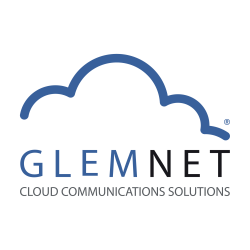Unraveling the Differences: ADSL, ISDN, FTTC and FTTP
As a communication solutions supplier, we understand the importance of choosing the right internet connection for your needs.
In this article, we will explore the key differences between four popular types of connections: ADSL, ISDN, FTTC, and FTTP.
Understanding these differences will help you make an informed decision when selecting the most suitable option for your home or business.
-
ADSL (Asymmetric Digital Subscriber Line): ADSL is one of the most widely used internet connection technologies. It utilizes existing copper telephone lines to deliver broadband internet access. Here are its defining characteristics:
a. Speed: ADSL provides asymmetrical speeds, meaning the download speed is faster than the upload speed. Typical ADSL connections offer download speeds ranging from 1 to 20 Mbps, while upload speeds can range from 512 Kbps to 1 Mbps.
b. Availability: ADSL is widely available in urban and rural areas, as it utilizes existing infrastructure. However, the connection quality and speed can vary depending on the distance from the local telephone exchange.
c. Connection Type: ADSL requires a microfilter to split the telephone and data signals, allowing simultaneous voice calls and internet access.
-
ISDN (Integrated Services Digital Network): ISDN is an older technology that offers digital transmission of voice, video, and data over traditional copper phone lines. Here are its key features:
a. Speed: ISDN offers symmetrical speeds, meaning the download and upload speeds are the same. Basic Rate Interface (BRI) provides two 64 Kbps channels for a combined speed of 128 Kbps, while Primary Rate Interface (PRI) can offer up to 2 Mbps.
b. Availability: ISDN availability varies by region, with more widespread availability in urban areas. However, it is being phased out in many locations in favour of newer technologies.
c. Connection Type: ISDN requires an ISDN terminal adapter to connect to a computer or PBX system. It can support multiple devices simultaneously using different channels.
-
FTTC (Fiber to the Cabinet): FTTC is a hybrid broadband technology that combines fibre-optic cables and traditional copper lines. Here's what you need to know about FTTC:
a. Speed: FTTC provides faster speeds compared to ADSL. It delivers high-speed data from the exchange to a street cabinet via fibre-optic cables and then uses existing copper lines to connect to individual premises. Typical download speeds range from 30 to 80 Mbps, while upload speeds can reach up to 20 Mbps.
b. Availability: FTTC availability depends on the infrastructure deployment in your area. It is more commonly available in urban and suburban locations.
c. Connection Type: FTTC requires an engineer to install a VDSL modem in your premises to establish a connection between the cabinet and your devices.
-
FTTP (Fiber to the Premises): FTTP, also known as fibre-optic broadband, provides the fastest and most reliable internet connection. It offers a direct fibre-optic link from the service provider's exchange to your premises. Consider the following aspects of FTTP:
a. Speed: FTTP offers lightning-fast speeds, both for downloads and uploads. It can provide symmetrical speeds ranging from 100 Mbps to 1 Gbps, or even higher in certain areas.
b. Availability: FTTP availability is expanding, with many providers investing in fibre infrastructure. However, it is more commonly available in densely populated areas and new developments.
c. Connection Type: FTTP requires an ONT (Optical Network Terminal) or fibre modem to convert the optical signal into Ethernet, which can then be connected to your devices.
Choosing the right internet connection is crucial for efficient communication and productivity. ADSL, ISDN, FTTC and FTTP offer varying speeds, availability and connection types. ADSL and ISDN are older technologies, while FTTC and FTTP utilize fibre-optic infrastructure for higher speeds. Consider your location, desired speeds, and budget when selecting the most suitable option for your needs. Consult with us to ensure you make an informed decision and enjoy seamless connectivity and remember:
ISDN is going to be switched off in 2025. Start your transition towards FULL FIBRE now, so you can migrate your connection in a smooth way.

